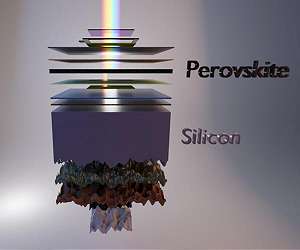This study is led by Prof. Kun Yang (Department of Earth System Science, Tsinghua University). Surface solar radiation (Rs) data is the essential information for the development of solar power usage to mitigate the ongoing climate change. To meet China’s carbon neutrality goal, China has invested and planned heavily in the solar photovoltaic systems.
However, future projections of Rs based on climate models contain large uncertainties due to internal climate variability, model uncertainty, and scenario uncertainty, which have not been eliminated by previous studies. Moreover, the model biases in Rs and the underlying drivers have yet to be quantified.
By integrating the high-quality observations and the latest Coupled Model Intercomparison Project Phase 6 (CMIP6) model data of Rs, the research team explored the model bias of CMIP6 models in Rs and quantified the physical causes of the model bias in China. The systematic bias in Rs in CMIP6 models is revealed to be caused by clouds and aerosols, resulting in largely uncertain projections for future changes in Rs (No.1).
To correct this effect, the team used historical biases of models to constrain the future projections of Rs under three possible future scenarios based on emergent constraints, an approach with a solid physical basis for narrowing the uncertainties of future climate projections through the combination of an ensemble of climate simulations with contemporary measurements.
The constrained results substantially reduce the projection uncertainties by about 56% in the mid-21st century (No.2). Moreover, they found that the constraints using the combined effect of the TCC and Rs-clear biases can account for about 81% of the projection uncertainties using R.
Moreover, the constrained projections of Rs show a spatial pattern significantly favorable for the future solar energy layout. They found that the mean Rs change during 2050-2069 relative to 1995-2014 is brightening. Particularly in North China and Southeast China with higher power demand, the constrained projections present more significant brightening (No.3).
With increased anthropogenic forcing, the constrained future changes become weaker brightening in eastern China and more dimming in western China (No.3). “Low anthropogenic emissions under the carbon neutrality actions would not only help to mitigate global warming but also increase solar energy potential, consequently creating positive feedback for building a climate-resilient society”, Yang says.
Better estimates and uncertainties of future Rs changes improves the reliability of climate projections to facilitate effective investment of solar power in China. Their results highlight the need to consider the change in spatial pattern of future Rs when making policies or decisions associated with future solar energy deployment.
Research Report:Constrained future brightening of solar radiation and its implication for China’s solar power
Related Links
Tsinghua University
All About Solar Energy at SolarDaily.com
|
We need your help. The SpaceDaily news network continues to grow but revenues have never been harder to maintain. With the rise of Ad Blockers, and Facebook – our traditional revenue sources via quality network advertising continues to decline. And unlike so many other news sites, we don’t have a paywall – with those annoying usernames and passwords. Our news coverage takes time and effort to publish 365 days a year. If you find our news sites informative and useful then please consider becoming a regular supporter or for now make a one off contribution. |
||
|
SpaceDaily Contributor $5 Billed Once credit card or paypal |
SpaceDaily Monthly Supporter $5 Billed Monthly paypal only |
|

![]()
Tandem solar cell achieves 32.5 percent efficiency
Berlin, Germany (SPX) Dec 20, 2022
Scientists from HZB could significantly improve on the efficiency of perovskite/silicon tandem solar cells. “This is a really big leap forward that we didn’t foresee a few months ago. All the teams involved at HZB, especially the PV Competence Center (PVComB) and the HySPRINT Innovation lab teams have worked together successfully and with passion,” says Prof. Steve Albrecht.
His team used an advanced perovskite composition with a very smart interface modification. The lead authors, postdocs Dr. Si … read more
